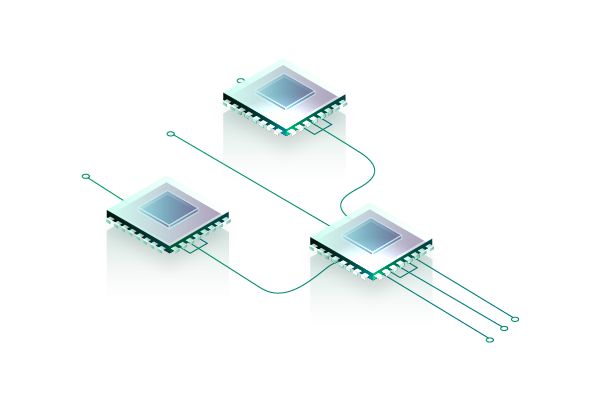Cryptocurrency mining has evolved from being a hobbyist activity to a full-fledged industry powering the infrastructure of blockchain networks. As we venture into 2025, mining is no longer just about Bitcoin — it’s about scalability, sustainability, regulation, and decentralization. The rise of ASICs, the growing importance of green energy, and increasing institutional involvement have all shaped a new generation of crypto mining companies.
This article dives deep into 12 of the best crypto mining companies to watch, invest in, or partner with in 2025 — spanning from publicly traded giants to innovative newcomers pushing the boundaries of eco-friendly and decentralized mining.
Sustainability in Crypto Mining

The environmental impact of cryptocurrency mining has been a topic of intense debate and concern in recent years. This stems from the significant energy consumption required by the vast and powerful networks of computers that perform the complex calculations necessary to maintain blockchain technology, which underpins cryptocurrencies like Bitcoin and Ethereum. As awareness of climate change and environmental sustainability grows, both the public and regulatory bodies are increasingly scrutinizing the ecological footprint of crypto mining.
In response to these concerns, companies within the cryptocurrency sector are exploring and implementing more sustainable practices to mitigate their environmental impact. Here’s a closer look at the main strategies being adopted:
- Renewable Energy Sources: Many crypto mining operations are transitioning to renewable energy sources such as solar, wind, hydroelectric, and geothermal power. This shift not only reduces the carbon footprint associated with mining but can also lead to lower operational costs in the long term due to the decreasing costs of renewable energy technologies.
- Energy-Efficient Mining Rigs: There’s a growing emphasis on developing and deploying mining hardware that consumes less electricity. Advances in semiconductor technology, for example, are leading to the creation of more efficient ASIC (Application-Specific Integrated Circuit) miners that offer a higher hash rate (the speed at which a miner can perform the cryptographic calculations) while using less power.
Also Read: Top 10 Blockchain Marketing Companies to Consider in 2025
- Strategic Location Siting: Companies are increasingly situating their mining operations in regions with abundant renewable energy sources and cooler climates. Cooler climates reduce the need for energy-intensive cooling systems to prevent overheating of mining equipment, further reducing the overall energy consumption.
- Carbon Offsetting: Some companies are investing in carbon offset programs to compensate for their carbon emissions. This can involve funding renewable energy projects, reforestation efforts, or other environmental initiatives that absorb CO2 from the atmosphere.
- Consensus Mechanism Changes: Beyond the hardware and energy sourcing, there’s a fundamental shift happening in the underlying technology of cryptocurrencies. For instance, Ethereum’s move from a Proof of Work (PoW) to a Proof of Stake (PoS) consensus mechanism significantly reduces its energy consumption. PoS requires validators to own and stake a certain amount of cryptocurrency to participate in the process of creating new blocks and validating transactions, which consumes far less energy than the computational work required by PoW.
- Collaboration and Regulation: The industry is also seeing increased collaboration between companies, governments, and NGOs to establish standards and regulations that encourage sustainable practices in crypto mining. This includes the formation of consortia dedicated to promoting energy efficiency and sustainability in the blockchain sector.
These initiatives represent a growing recognition within the cryptocurrency industry of the need to address environmental concerns. By adopting more sustainable practices, the industry aims to reduce its carbon footprint and contribute to global efforts against climate change, ensuring that the digital currency boom does not come at the expense of the planet’s health.
12 Best Crypto Mining Companies in 2025

As the world becomes increasingly decentralized, the companies behind the scenes—the ones running powerful rigs, optimizing algorithms, and securing networks—are emerging as the real titans of Web3 infrastructure. Whether you’re an investor looking for opportunities, a tech enthusiast exploring innovation, or simply crypto-curious, understanding the top mining companies is essential. In this deep dive, we explore the 12 best crypto mining companies to watch in 2025, each shaping the future of decentralized finance, one block at a time.
1. Riot Platforms Inc. (RIOT)
Riot Platforms is a publicly traded company and one of the largest Bitcoin mining operations in North America. With large-scale facilities in Texas and a strong emphasis on renewable energy, Riot has continued to expand its mining capacity throughout 2024 and into 2025.
Why Riot in 2025?
Recently completed a 1 GW expansion in Corsicana, TX.
One of the lowest-cost BTC producers, thanks to renewable energy partnerships.
Transparent financials as a NASDAQ-listed company.
Strong institutional interest and compliance with U.S. regulations.
Key Numbers (Q1 2025)
Hashrate: 18.3 EH/s
BTC mined monthly: ~520
Power source: Wind & natural gas hybrid
2. Marathon Digital Holdings (MARA)
Another heavyweight in the U.S., Marathon has evolved from a pure-play miner to a strategic operator of mining infrastructure, even partnering with governments and private data centers across North America.
Why Marathon in 2025?
Diversified operations in the U.S., UAE, and Europe.
Massive emphasis on regulatory-compliant mining.
Leading the development of immersion-cooled mining farms.
Notable Projects
200 MW immersion-cooled site in Abu Dhabi.
New partnership with a sovereign wealth fund in Scandinavia.
3. Bitdeer Technologies Group (BTDR)
Founded by former Bitmain co-founder Jihan Wu, Bitdeer is headquartered in Singapore with mining facilities in North America, Europe, and Asia. Bitdeer’s strength lies in infrastructure, software development, and cloud mining.
Why Bitdeer in 2025?
Advanced smart-mining algorithms optimizing energy efficiency.
Publicly traded (NASDAQ), offering investor transparency.
One of the few players effectively managing both BTC and ETH mining (via staking infrastructure).
4. Hive Digital Technologies
Hive is known for combining cryptocurrency mining with sustainable energy usage. With a focus on green energy and GPU mining, Hive is strategically positioned in Canada, Sweden, and Iceland.
Why Hive in 2025?
100% green-powered mining operations.
Leading GPU-based miner post-ETH Merge by pivoting to AI compute services.
Merged blockchain and AI mining in a single infrastructure — a 2025 trend.
5. Genesis Digital Assets
Privately held and one of the oldest mining outfits globally, Genesis Digital has a sprawling global presence with a focus on institutional partnerships.
Why Genesis in 2025?
Recently expanded in Kazakhstan, Sweden, and the U.S.
Close partnerships with top-tier financial institutions.
Significant internal development of ASIC firmware to improve performance.
6. Argo Blockchain (ARBKF)
UK-based Argo Blockchain is one of the few publicly listed crypto mining companies on both the LSE and OTCQX. Argo has made a strong pivot to sustainable operations in North America.
Why Argo in 2025?
Recent recovery from financial headwinds in 2022–2023.
Acquisition of new hydro-powered mining facilities in Quebec.
Rebranding in Q4 2024 with a stronger emphasis on carbon neutrality.
7. Core Scientific (CORZQ)
After emerging from Chapter 11 restructuring in 2024, Core Scientific is making a huge comeback with new leadership and a revitalized strategic roadmap.
Why Core Scientific in 2025?
Reorganization made the company leaner and more efficient.
Recommitted to North American dominance with a 900 MW roadmap.
Reinvesting in AI-crypto compute hybrid infrastructure.
8. Bitmain Technologies
The world’s leading ASIC hardware manufacturer also operates some of the largest mining farms in China and Central Asia, although it has reduced public exposure.
Why Bitmain in 2025?
Still the go-to supplier of Antminer S21 and upcoming S23.
Quietly operates mega farms via subsidiaries in Central Asia and Russia.
Heavily investing in AI-mining hybrid chips.
9. Binance Pool
Not a traditional miner, Binance Pool is a mining platform under the Binance ecosystem that allows users to pool resources or rent hashrate.
Why Binance Pool in 2025?
Offers both Proof-of-Work and Proof-of-Stake staking infrastructure.
Integrated with Binance’s DeFi and CeFi tools for maximum flexibility.
Great entry point for retail and semi-professional miners.
10. Foundry USA
Owned by Digital Currency Group (DCG), Foundry is the largest BTC mining pool headquartered in the U.S. It also provides financing and logistics for miners.
Why Foundry in 2025?
Leading U.S.-based mining pool by hashrate (~35% of network).
Expanding hardware resale and repair services in 2025.
Deep connections with institutional players like Grayscale.
11. Canaan Inc. (CAN)
Chinese company Canaan made its name developing the Avalon ASIC series. Unlike Bitmain, Canaan focuses on long-term chip development and public transparency.
Why Canaan in 2025?
Recently released the Avalon A1460 series with improved 3nm chips.
Pushing expansion in Africa and Southeast Asia.
Publicly listed and surprisingly investor-friendly.
12. Northern Data AG
German-based Northern Data has transformed itself from a crypto-only mining firm into a broader data infrastructure company, blending crypto with AI compute power.
Why Northern Data in 2025?
Building some of the largest GPU clusters in Europe.
Strong institutional backing, including from Tether and other crypto giants.
Positioned at the crossroads of crypto, AI, and cloud computing.
Trends Driving Crypto Mining in 2025
Crypto mining in 2025 is changing fast. It’s no longer just about solving complex puzzles to earn Bitcoin — it’s about doing it smarter, faster, and in a way that’s better for the planet. As technology evolves and energy becomes a bigger focus, mining companies are finding new ways to stay ahead. From using green energy to adding artificial intelligence and working closely with governments, these trends are shaping the future of mining and making it more efficient and sustainable than ever before.
Green Energy
Mining operations using hydro, wind, and solar are being prioritized — not just for sustainability but also due to regulatory incentives in Europe and the U.S.
Immersion Cooling
With the rise of ultra-efficient ASICs like the S21 and A1460, immersion cooling is becoming the new standard for reducing energy consumption and increasing lifespan.
Government Collaboration
More miners are partnering with governments, especially in the Middle East, Central Asia, and North America, for stable energy supply and regulatory security.
AI Integration
2025 sees a merging of crypto mining infrastructure and AI computing — with companies repurposing GPUs for LLM training and AI-based blockchain analytics.
Institutionalization
Mining is no longer a Wild West — it’s regulated, financed, and heavily audited. Most of the companies on this list provide investor-grade reports and ESG compliance.
How to Choose the Right Mining Company to Work With or Invest In
When exploring mining companies in 2025, consider the following factors:
Energy Source: Is it sustainable, affordable, and stable?
Location: Geopolitical risks and energy grid stability matter more than ever.
Technology Stack: Are they using cutting-edge ASICs or hybrid AI tools?
Transparency: Public financials and regulatory compliance are a must.
Partnerships: Look for miners with ties to governments, banks, or tech giants.
The Evolution of Crypto Mining Technologies

The evolution of crypto mining technologies is a fascinating journey marked by rapid advancements and innovations. In the early days of cryptocurrency, mining was a relatively simple process that could be done using the CPUs (Central Processing Units) of standard personal computers. This was largely due to the low difficulty level of mining and the lack of widespread interest in cryptocurrencies.
From CPU to GPU
As cryptocurrencies, particularly Bitcoin, began to gain more attention and value, the mining process became more competitive and resource-intensive. Miners started to look for more efficient ways to mine. This led to the adoption of GPUs (Graphics Processing Units) for mining. GPUs, which are primarily designed for processing video game graphics, proved to be much more effective at handling the parallel processing tasks required for crypto mining than CPUs. This shift significantly increased mining efficiency and speed.
The Rise of ASICs
The next major evolution came with the development of ASICs (Application-Specific Integrated Circuits). Unlike CPUs and GPUs, which are general-purpose processors, ASICs are custom-built to perform a specific task—in this case, crypto mining.
This specialization allows ASICs to mine cryptocurrencies at unprecedented speeds and with significantly lower power consumption compared to GPUs and CPUs. However, the introduction of ASICs also led to centralization concerns in the mining community, as these devices are expensive and can make mining less accessible to the average individual.
FPGAs and Beyond
Before ASICs became dominant, some miners also experimented with FPGAs (Field-Programmable Gate Arrays). FPGAs are similar to ASICs in that they can be optimized for mining, but they are reprogrammable, offering more flexibility than ASICs. However, FPGAs never became as popular as GPUs or ASICs, mainly due to their cost and complexity.
Software Innovations
Alongside hardware advancements, there have also been significant developments in mining software. Early mining software was basic and required considerable technical knowledge to operate. Today, mining software is much more user-friendly and efficient, with features like automated pool switching to maximize earnings, remote monitoring, and control of mining rigs.
The Future of Crypto Mining Technologies
Looking forward, the evolution of crypto mining technologies is likely to focus on sustainability and efficiency. As concerns about the environmental impact of crypto mining grow, there is a push towards greener technologies and renewable energy sources. Innovations in hardware that reduce power consumption while maintaining or increasing mining efficiency will be key.
Additionally, as cryptocurrencies and blockchain technology continue to evolve, we may see the development of new consensus mechanisms that are less energy-intensive than the current Proof of Work (PoW) system used by Bitcoin and many other cryptocurrencies. For instance, Proof of Stake (PoS) and other consensus models could reduce the need for extensive mining operations, potentially leading to a new phase in the evolution of crypto mining technologies.
The journey from CPU mining to the sophisticated ASIC and GPU rigs of today highlights the dynamic nature of crypto mining. As the industry continues to grow and evolve, we can expect further innovations in both hardware and software, driven by the dual goals of increasing efficiency and reducing the environmental footprint of mining activities.
The Impact of Regulation on Crypto Mining
The impact of regulation on crypto mining is a multifaceted issue that touches upon legal, economic, and environmental considerations. As cryptocurrencies have grown in popularity and value, they’ve attracted more attention from regulatory bodies around the world.
This attention is driven by concerns over financial security, energy consumption, and the potential for misuse in illegal activities. As a result, current and upcoming regulations are shaping the operational landscape for crypto mining companies, necessitating adjustments to ensure compliance and sustainability.
- Legal and Financial Regulations: Countries are implementing various legal frameworks to regulate crypto mining activities. This includes licensing requirements, tax implications, and specific laws aimed at integrating crypto mining operations into the formal economy. For example, some jurisdictions may impose taxes on the profits generated from mining, while others might regulate the sale and distribution of cryptocurrencies. These regulations require mining operations to maintain meticulous records, adhere to financial reporting standards, and sometimes limit operations to certain geographic areas.
- Energy Consumption and Environmental Impact: The environmental impact of crypto mining, particularly its substantial energy consumption, has prompted regulatory bodies to take action. In some regions, there are restrictions on using certain types of energy sources for mining operations, aiming to encourage the use of renewable energy. Additionally, caps on energy consumption or carbon emissions could be imposed, pushing mining companies to innovate more energy-efficient mining technologies or relocate to areas where green energy is readily available and affordable.
- Adaptation and Compliance Strategies: To navigate these regulatory landscapes, crypto mining companies are adopting various strategies. This includes relocating operations to countries with more favorable regulations or lower energy costs, investing in renewable energy sources, and developing more energy-efficient mining hardware. Furthermore, companies are engaging with regulatory bodies to shape policies that support the growth of the crypto industry while addressing legitimate concerns around energy consumption and financial security.
- Impact on Global Operations: The global nature of cryptocurrencies means that regulation in one region can have ripple effects worldwide. For instance, a crackdown on mining in one country can lead to increased mining activity in another, shifting the global distribution of mining operations. This dynamic landscape requires companies to be agile and responsive to regulatory changes, potentially affecting their long-term operational and strategic planning.
The impact of regulation on crypto mining is significant, with current and upcoming regulations affecting how companies operate on a daily basis. By understanding and adapting to these regulatory environments, crypto mining companies can ensure compliance, reduce their environmental impact, and contribute to the sustainable growth of the cryptocurrency sector.
Investing in Crypto Mining: Risks and Rewards
Investing in crypto mining involves allocating resources, such as capital and computing power, to validate transactions on a blockchain network and earn rewards in the form of cryptocurrency. This sector of the crypto industry has attracted significant interest due to the potential for high returns. However, like any investment, it comes with its own set of risks and rewards that investors need to carefully consider.
Risks
- Market Volatility: The cryptocurrency market is known for its extreme volatility. The value of cryptocurrencies can fluctuate widely in very short periods, affecting the profitability of mining operations. Sudden drops in value can erode profits or lead to losses.
- Regulatory Changes: The legal landscape for cryptocurrency is still evolving. Governments around the world are considering various regulatory approaches, and new regulations or bans on mining activities could impact the viability of investments.
- Technological Obsolescence: Crypto mining technology advances rapidly. The equipment used today may become obsolete in a few years, requiring additional investments to stay competitive.
- Energy Costs: Mining is energy-intensive, and rising electricity costs can significantly impact profitability. Regions with high energy costs or those that implement regulations on energy usage for mining operations could affect the long-term sustainability of mining investments.
- Network Difficulty: The difficulty of mining new blocks can increase as more miners join the network, reducing the chances of earning rewards. This competition can lead to lower returns over time.
Also Read: Top 20 LLM Interview Questions to Know in 2025
Rewards
- Potential for High Returns: If the value of the mined cryptocurrency increases, investors can see significant returns on their initial investment. This potential for high rewards attracts many to the crypto mining sector.
- Passive Income: Once the initial setup is complete and the mining rigs are operational, crypto mining can provide a relatively passive income stream, earning rewards as transactions are validated.
- Contribution to Blockchain Security: By participating in mining, investors contribute to the security and decentralization of the blockchain network, an integral part of the ecosystem’s value proposition.
- Diversification: For those already investing in cryptocurrencies, adding mining to their investment portfolio can offer diversification, spreading risk across different aspects of the crypto market.
Strategies for Mitigation
- Research and Due Diligence: Thorough research into the cryptocurrencies being mined, the technology used, and the energy costs associated with mining is essential.
- Diversification: Investing in a range of cryptocurrencies and mining operations can spread risk.
- Energy Efficiency: Focusing on energy-efficient mining equipment and operations can help mitigate the impact of rising energy costs.
- Stay Informed: Keeping up-to-date with regulatory changes, technological advancements, and market trends can help investors make informed decisions and adjust strategies as necessary.
Investing in crypto mining requires a careful assessment of the risks and rewards. While the potential for high returns exists, investors must be prepared for the volatility and challenges specific to the crypto market. With proper research, due diligence, and risk management strategies, investors can navigate the complexities of crypto mining investments more effectively.
Conclusion
The crypto mining industry in 2025 is robust, dynamic, and more mature than ever. Whether you’re an investor, entrepreneur, or crypto enthusiast, understanding the key players gives you an edge in navigating this essential part of the blockchain ecosystem.
From sustainability warriors like Hive to tech giants like Bitmain and infrastructure innovators like Northern Data, the companies listed here represent the best of what mining has to offer this year.
As the market continues to evolve, staying informed about the movers and shakers in mining will be crucial for anyone serious about blockchain’s future.
Disclaimer: The information provided by HeLa Labs in this article is intended for general informational purposes and does not reflect the company’s opinion. It is not intended as investment advice or recommendations. Readers are strongly advised to conduct their own thorough research and consult with a qualified financial advisor before making any financial decisions.

Joshua Soriano
I am a writer specializing in decentralized systems, digital assets, and Web3 innovation. I develop research-driven explainers, case studies, and thought leadership that connect blockchain infrastructure, smart contract design, and tokenization models to real-world outcomes.
My work focuses on translating complex technical concepts into clear, actionable narratives for builders, businesses, and investors, highlighting transparency, security, and operational efficiency. Each piece blends primary-source research, protocol documentation, and practitioner insights to surface what matters for adoption and risk reduction, helping teams make informed decisions with precise, accessible content.
- Joshua Soriano#molongui-disabled-link
- Joshua Soriano#molongui-disabled-link
- Joshua Soriano#molongui-disabled-link
- Joshua Soriano#molongui-disabled-link

